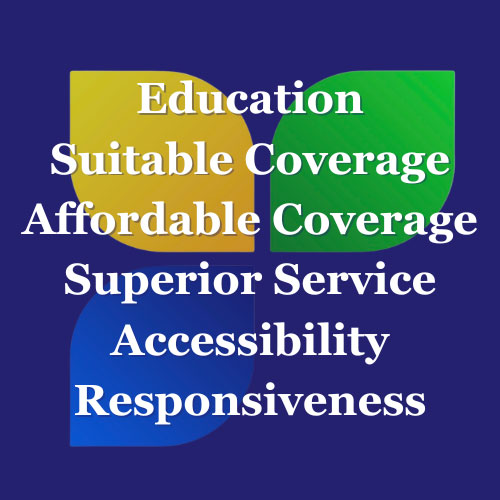As we age, healthcare becomes an increasingly important aspect of our lives. For many seniors in the United States, Medicare serves as a vital lifeline, providing access to essential medical services and treatments. However, with various parts and plans available, understanding Medicare can often feel like navigating a complex maze. To shed light on this topic, let’s explore what Medicare is, how it works, and the role of Medicare Advantage plans in enhancing coverage.
Understanding Medicare
What is Medicare?
Medicare is a federal health insurance program primarily designed for individuals aged 65 and older, certain younger people with disabilities, and those with End-Stage Renal Disease (ESRD). Established in 1965, Medicare aims to provide access to affordable healthcare services for eligible individuals.
Parts of Medicare
Medicare is divided into several parts, each covering different aspects of healthcare:
- Medicare Part A (Hospital Insurance): Part A covers inpatient hospital stays, skilled nursing facility care, hospice care, and some home health care services. For most beneficiaries, Part A does not require a monthly premium if they or their spouse have paid Medicare taxes while working.
- Medicare Part B (Medical Insurance): Part B covers medical services and supplies that are necessary to treat a medical condition. This includes doctor’s visits, outpatient care, preventive services, and durable medical equipment. Beneficiaries typically pay a monthly premium for Part B coverage.
- Medicare Part C (Medicare Advantage): Also known as Medicare Advantage, Part C offers an alternative to Original Medicare by allowing beneficiaries to receive their Medicare benefits through private insurance plans. These plans often include additional benefits such as prescription drug coverage, vision, dental, and wellness programs.
- Medicare Part D (Prescription Drug Coverage): Part D provides prescription drug coverage through private insurance companies approved by Medicare. Beneficiaries can enroll in standalone Part D plans to complement their Original Medicare coverage or select Medicare Advantage plans that include prescription drug coverage.
Enrollment Periods
Understanding Medicare enrollment periods is crucial for ensuring timely access to coverage:
- Initial Enrollment Period (IEP): This is the seven-month period that begins three months before an individual turns 65, includes the month of their 65th birthday, and ends three months after their birthday month.
- Annual Enrollment Period (AEP): Also known as the Open Enrollment Period, the AEP occurs from October 15th to December 7th each year. During this period, beneficiaries can switch Medicare Advantage plans, enroll in a new plan, or return to Original Medicare.
- Special Enrollment Periods (SEPs): SEPs allow individuals to enroll in Medicare outside of the standard enrollment periods under certain circumstances, such as moving, losing employer coverage, or qualifying for Medicaid.
Exploring Medicare Advantage Plans
What is Medicare Advantage?
Medicare Advantage plans, often referred to as Medicare Part C, are private health insurance options approved by Medicare. These plans offer an alternative way to receive Medicare benefits while potentially providing additional coverage beyond what Original Medicare offers.
Key Features of Medicare Advantage Plans
- Coverage Beyond Original Medicare: Medicare Advantage plans typically cover all the benefits of Original Medicare (Parts A and B) and may include additional services such as vision, dental, hearing, and wellness programs.
- Prescription Drug Coverage: Many Medicare Advantage plans include prescription drug coverage (Part D), providing beneficiaries with a convenient all-in-one solution for their healthcare needs.
- Network-Based Coverage: Medicare Advantage plans often utilize provider networks, which may include preferred doctors, hospitals, and specialists. Beneficiaries may need to choose healthcare providers within the plan’s network to receive maximum coverage.
- Out-of-Pocket Maximums: Unlike Original Medicare, which has no out-of-pocket maximum, Medicare Advantage plans set annual limits on out-of-pocket costs for covered services. Once beneficiaries reach this limit, the plan typically covers 100% of covered services for the remainder of the year.
Types of Medicare Advantage Plans
Medicare Advantage plans come in various forms, including:
- Health Maintenance Organization (HMO) Plans: HMO plans typically require beneficiaries to select a primary care physician (PCP) and obtain referrals to see specialists within the plan’s network.
- Preferred Provider Organization (PPO) Plans: PPO plans offer more flexibility in choosing healthcare providers and do not usually require referrals to see specialists. Beneficiaries may pay lower out-of-pocket costs for services received from in-network providers.
- Private Fee-for-Service (PFFS) Plans: PFFS plans determine how much they will pay for covered services and how much beneficiaries will pay when they receive care. Providers must accept the plan’s terms and conditions to treat beneficiaries.
- Special Needs Plans (SNPs): SNPs are tailored to individuals with specific health conditions or circumstances, such as chronic illnesses or residing in long-term care facilities. These plans provide targeted care management and support services.
Choosing the Right Medicare Advantage Plan
Selecting the most suitable Medicare Advantage plan requires careful consideration of individual healthcare needs, preferences, and budgetary constraints. Here are some factors to consider:
- Coverage Needs: Evaluate the services and benefits offered by different plans, including prescription drug coverage, vision, dental, and additional wellness programs.
- Provider Networks: Consider whether your preferred doctors, hospitals, and specialists are included in the plan’s network. Out-of-network services may result in higher out-of-pocket costs.
- Costs: Compare premiums, deductibles, copayments, and coinsurance amounts across different plans to determine the overall cost-effectiveness of each option.
- Quality Ratings: Review Medicare’s quality ratings for Medicare Advantage plans, which assess factors such as customer satisfaction, provider network adequacy, and healthcare outcomes.
The Crucial Role of Medicare
Medicare and Medicare Advantage plans play crucial roles in providing healthcare coverage and services to millions of Americans. Understanding the complexities of Medicare and navigating the array of available options can be daunting, but with the right information and guidance, beneficiaries can make informed decisions that best suit their individual needs.
Whether opting for Original Medicare with supplemental coverage or choosing a Medicare Advantage plan, it’s essential to assess factors such as coverage, costs, provider networks, and plan quality to ensure comprehensive and affordable healthcare coverage in retirement.
As healthcare needs evolve and circumstances change, beneficiaries can revisit their coverage options during Medicare’s designated enrollment periods to make adjustments and secure the most suitable plan for their evolving needs. By staying informed and proactive, individuals can navigate the Medicare maze with confidence and peace of mind.





